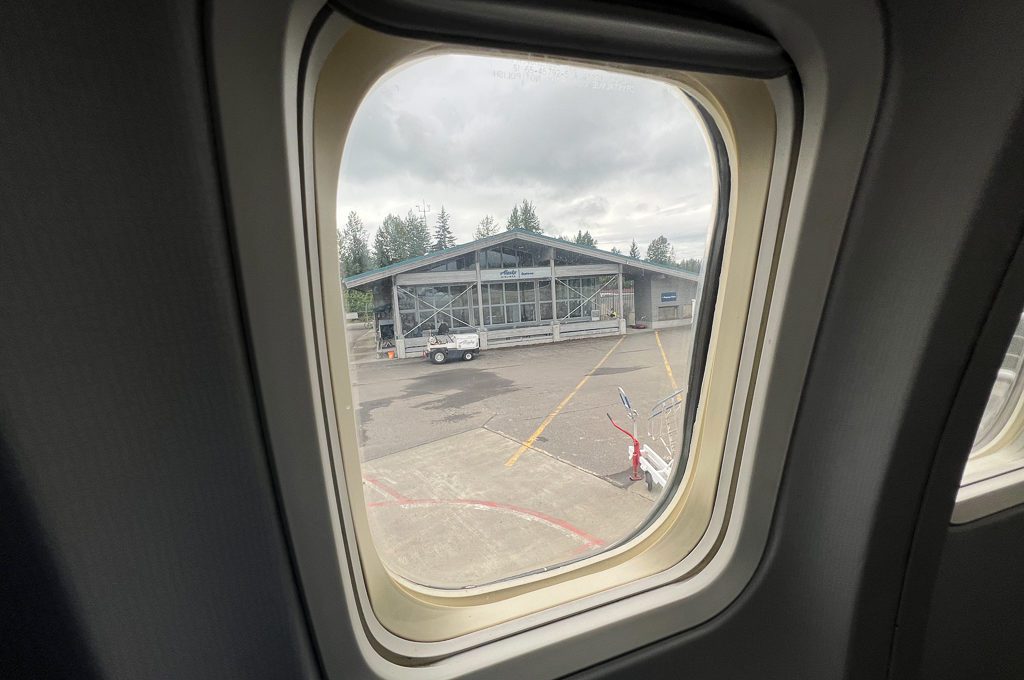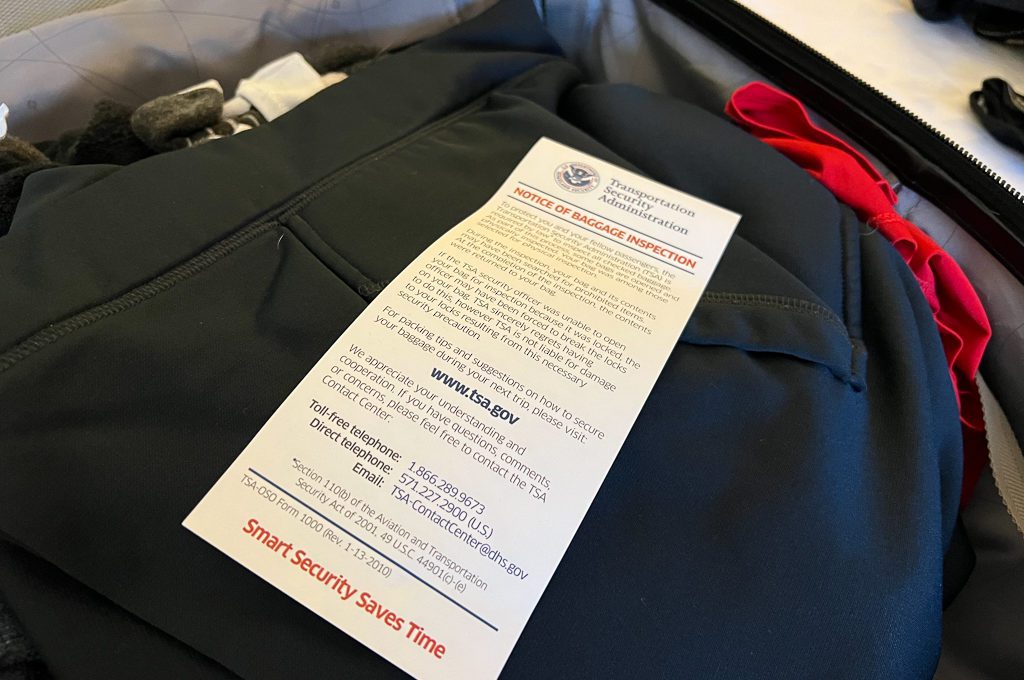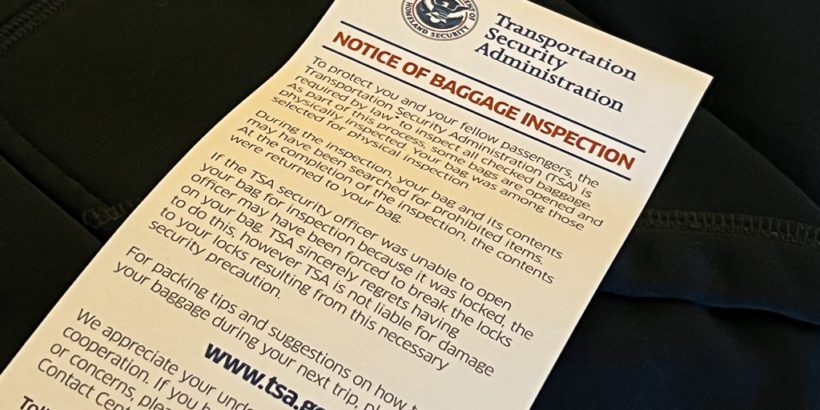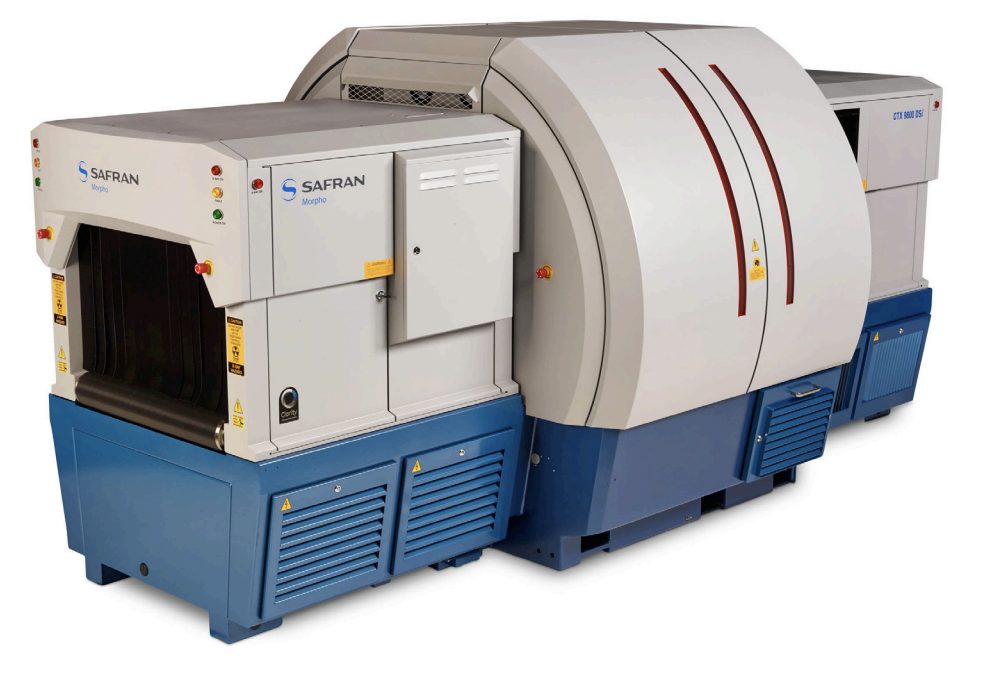Have you ever wondered what happens to your checked baggage whenever you hand it over to TSA?
What type of machines scan your bag and what determines if a human gets to dig through your personal belongings?
In this article, we will take a look at what goes on behind the scenes with your checked baggage and what you need to worry (or not worry) about.
Table of Contents
How does TSA scan your checked baggage?
Whenever you bring checked baggage to the airport, there are a few different ways it might be screened and it often depends on the size of the airport.
Tiny airports
At a really small airport, there may be no automated machines for scanning your bags, and the facility might rely purely on physical searches by TSA agents.
This means that your checked bag is treated more similar to an enhanced carry-on search where an agent is going to take a close look and will likely be digging through the contents of your bag.
This could happen right in front of your face and that’s what we encountered flying through the tiny airport in remote Gustavus, Alaska.
So if you’re ever flying out of a very remote location you may want to pack your checked bag with this in mind.

Small to medium size airports
At other airports, usually those that are small to medium size, you may have to bring your checked baggage over to a TSA screening station after you check in.
This could mean waiting in three lines: the check-in line, the TSA checked baggage security line, and then the standard TSA security line so it can add on time which is something to be aware of for people who cut it close.
Sometimes if you are flying first class or some other premium class, an airline agent may take care of this step for you.
Large airports
And then you have the usual experience you’ll find at large airports.
This is when you check in your luggage with contractors outside or at the airlines’ check-in desk and they put your luggage on a conveyor belt.

That belt is often directly connected to the in-line system used by TSA which automates the screening of your bag through large machines like the one pictured below.
We take this in-line system for granted but it streamlines the checked baggage process by allowing the TSA screening and the handling of your bags by the airline to take place in a (hopefully) seamless process.
It’s often built underground so you never get to see this very busy maze of conveyor belts with your own eyes.
How the automated screening works
If your bag is placed in the in-line automated screening process, it will go through a complex network of conveyor belts where it will be screened by explosives trace detection technology like the machine above.
An in-line system at a large airport will likely have many of these large machines allowing for the screening to take place at an efficient rate.
The combination of sophisticated software and advanced scanners allows TSA to automatically detect anything that resembles a dangerous substance. They are largely looking at the mass and density of different items since the mass of materials typically fall within a certain range to be dangerous.
TSA states that “EDS technology uses computed tomography imaging to quickly capture an image of a single bag to ensure it does not contain a threat item.”
These EDS (explosive detection systems) scanners like the CTX 9800 DSi essentially give TSA a high resolution, 3D (x-ray) view of your checked baggage item. Below is what TSA will see when they scan your checked baggage in a lot of cases.

I’ve seen somewhat conflicting reports on what imaging takes place during the initial screening.
Some sources say every bag goes through this type of scanner but a breakdown at How Stuff Works makes it sound like tomography imaging (via CT scanner) is only used after a bag has been deemed a threat when they state “only bags that the computer flags as ‘suspicious’ are checked.”
They go on further to see that your bag could be flagged based on your suspicious conduct like irregular travel activity. Basically, the same type of “suspect” activity that can get you SSSS, could apparently get your checked bag inspected extra close which makes perfect sense. (I’m guessing, this is all tracked with the barcode on your luggage.)
Regardless of how your bag can get flagged, once it is flagged for an “anomaly” or for being “suspect” a TSA agent will then take a close look at your bag via a screen to determine the location of the anomaly.
That agent can then choose to give your bag a manual inspection in what is called a “resolution room.”
In that case, the agent will dig through the contents of your bag to locate and verify the status of the anomaly. For example, they will put it through some type of testing (that exact process is confidential).
If they find something banned they will remove it and possibly report you depending on the severity of the item.
Often, if they find small amounts of something like marijuana they do not make a big deal about it because that is not the type of threat they are trying to detect (but don’t get too bold).
Once they are done, they are required to leave a slip (Notice of Bag Inspection) in your bag to let you know that your bag was manually searched. Keep in mind that if you see the slip, as we did below, this does NOT mean that an object was removed from your bag.

Most bags that go through the automated system are never physically screened by an agent. Instead, according to TSA only about 10% of bags get searched by an agent.
But still, that’s a pretty high amount considering that they process about 1.4 million checked bags per day. So that’s approximately 104,000 bags that are physically inspected every day.
This means there are over 100,000 chances every day that something might be taken from a bag without justification.
To prevent misconduct in these situations, an airport will often set up a surveillance system in the resolution rooms where these physical screenings take place.
That way, any time an agent is digging through your bag there is a camera watching them and hopefully discouraging them from stealing something, which a tiny fraction of TSA agents have been caught doing before.
But that may not be guaranteed because TSA says that the surveillance systems used for checked baggage facilities “fall to individual airports as part of their security plan.”
They reiterate that these systems “vary from airport to airport and may include CCTV” (emphasis added).
So how long does all of this take?
You might be impressed to know that these bags get through the entire screening system and arrive to the airlines ready for loading in as little as 10 minutes!
Should you use TSA locks for your checked baggage?
You can easily find “TSA approved locks” which are made by Safe Skies Luggage Locks and Travel Sentry.
There are different versions of these locks but each of them can be opened with a TSA master key.
This means that you can keep your luggage locked during all stages of your travel except for the time when TSA needs to potentially get in your bag.
These locks can add an additional level of security to your bag as it moves through the vast unknown network of conveyor belts and onto the plane. However, the master key for these locks could be obtained by anyone and so these locks are not safe to use outside of the TSA screening travel context.
Related: TSA Approved Locks Guide (Worth It?)
What if TSA damages my checked baggage?
It’s not really clear to me how you can place the blame on TSA versus the airline when something happens to your checked baggage.
The TSA website states that
If your property is lost or damaged during the screening process, you may file a claim with TSA. If your property is lost or damaged during transport to the plane or baggage claim, please contact your airline.
So it’s clear that TSA has a process for handling these but again I don’t see how in the majority of cases you would be able to place the blame on TSA versus the airline when your bag is lost or stolen.
For those airports that have surveillance cameras in the resolution rooms, perhaps you can request for the airport to review those if something goes missing.
However, I would expect these claims to take a very long time to be resolved. For example, TSA states to “allow up to six months to fully investigate your claim” and even longer if law-enforcement is involved.
What the process looks like
If you’re wondering what the in-line baggage screening process looks like, here are a couple of videos you can check out.
They are a little dated and new systems seem like they are always on the horizon so some airports may do things differently as new technology is introduced. Still, these give you the general picture and also a good sense of the scale that they operate with.
Final word
Your checked bag is always going to undergo some type of screening before it is allowed on a plane.
This could be an invasive physical inspection or just a scanning from an explosive detection machine. Either way, if you have certain banned substances your bag may be flagged, those objects removed, and you could even be reported depending on the severity.
If something goes wrong with your bag and it is damaged or lost you do have a way to file a claim although I’m not entirely sure how you go about proving who the culprit was.
Daniel Gillaspia is the Founder of UponArriving.com and the credit card app, WalletFlo. He is a former attorney turned travel expert covering destinations along with TSA, airline, and hotel policies. Since 2014, his content has been featured in publications such as National Geographic, Smithsonian Magazine, and CNBC. Read my bio.



Can instant pudding boxes (3.4 oz) go in checked baggage? Pens, pencils and other school supplies as well?
Bro its pudding, plus eat healthier bro.